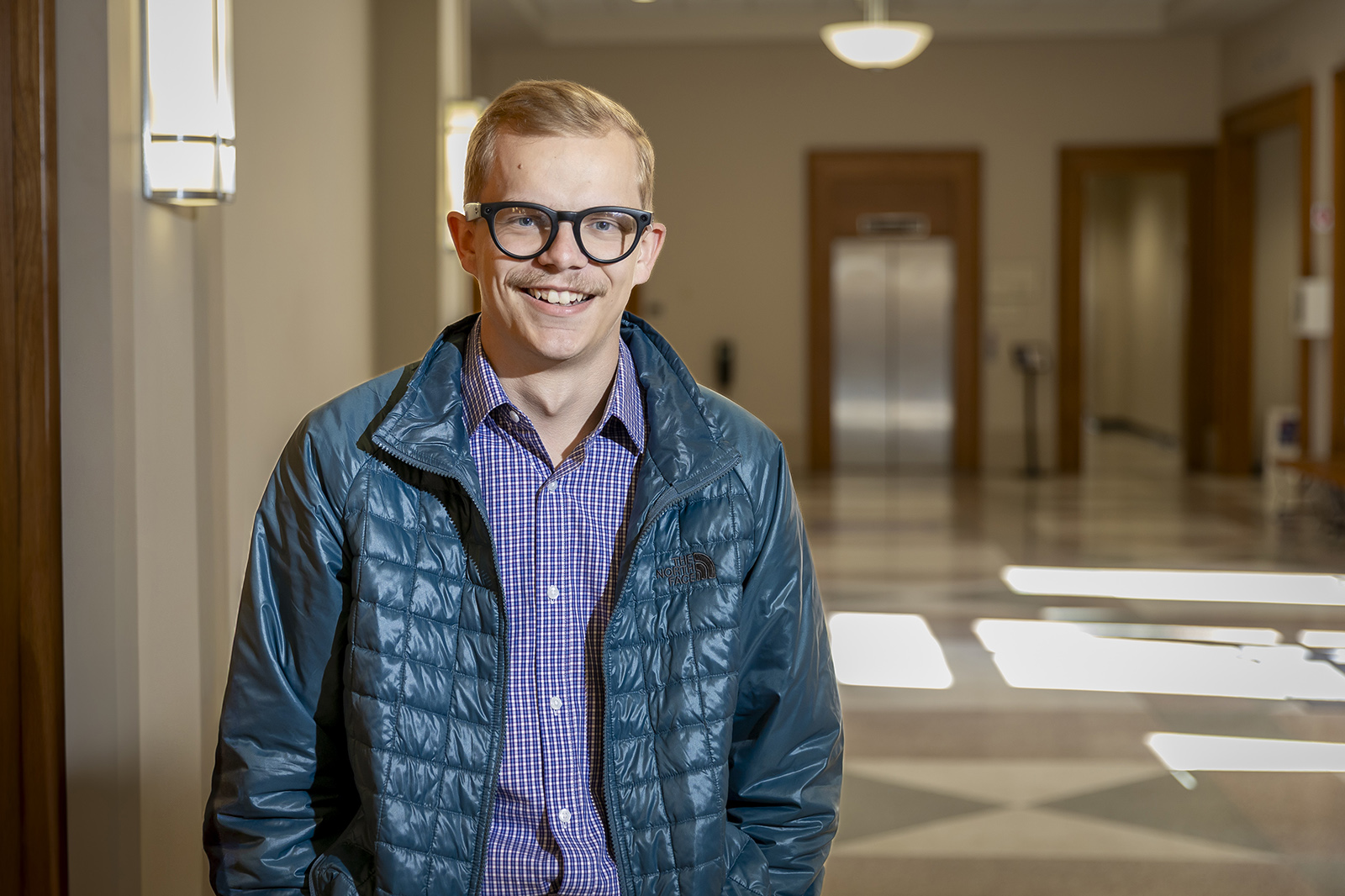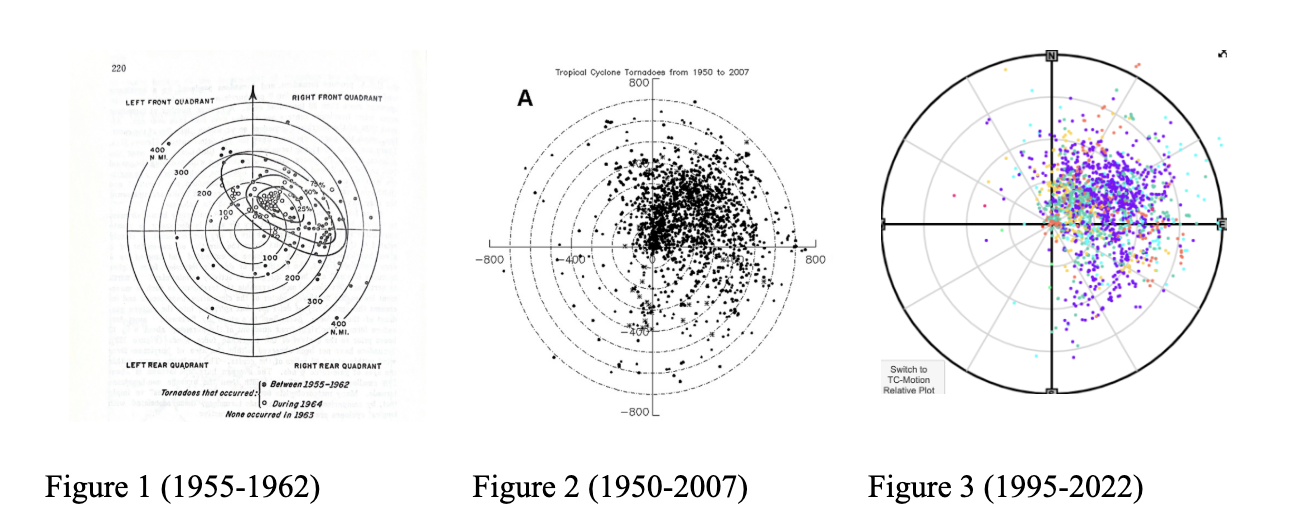LSU Student’s Research on Tropical Storm Tornado Trends Could Pinpoint Risk Zones and Protect Lives
April 02, 2025
Tropical storms bring strong winds, heavy rainfall, and low-pressure centers, often accompanied by thunderstorms and sometimes tornadoes.

Jonathan Russell
These tornadoes typically form in the storm’s northeast quadrant, but over the past 20 years, a potential shift has emerged, possibly expanding risk zones and endangering lives.
LSU student researcher and aspiring meteorologist Jonathan Russell is investigating this phenomenon in hopes of developing new and improved forecasting solutions that could lead to life-saving alerts.
“Tornadoes often occur when a tropical system makes landfall, so they cannot be prevented,” Russell said. “However, by improving upon the current established knowledge, we are able, through this research, to reduce the damage to life and property.”
Beyond the scientific issue of understanding severe weather dynamics, it’s also an issue of warning people of tornadic risks in an expanding risk zone where people might otherwise ignore the possibility of danger.

Jonathan Russell and Dr. Robert Rohli review maps pinpointing past tornadic activity.

Jonathan Russell and Dr. Robert Rohli review maps pinpointing past tornadic activity.

Jonathan Russell is majoring in coastal environmental science with a concentration in coastal meteorology.

Jonathan Russell is majoring in coastal environmental science with a concentration in coastal meteorology.
Russell, of Waxhaw, N.C., is a junior Ogden Honors College student at LSU majoring in coastal environmental science with a concentration in coastal meteorology and a triple minor in climatology, disaster science management, and geographic information science. He is no stranger to weather research and forecasting, especially regarding tropical systems.
In 2023, he developed the LSU-Velocity Risk Gulf Hurricane Outlook, the first-ever Gulf-specific forecast, during an internship at Velocity Risk, a catastrophic risk insurance underwriting company. With that successful project as a launch pad, Russell turned his attention to something that first caught his eye as a teenage weather enthusiast.
About the Research
Throughout high school, as a childhood interest in meteorology grew stronger, Russell became fascinated with the northeast/front right quadrant of landfalling tropical systems. Though this sector is understood to produce tornadoes, Russell’s weather observations showed there was more to the story.
He arrived at LSU with the idea to research tornadogenesis, or the process of tornado formation, and the possibility that tornadoes occur at a higher frequency and, more often than expected, outside the typical northeast quadrant.
Russell has taken the lead in finding answers, working under the guidance of Dr. Robert Rohli, professor in the Department of Oceanography & Coastal Sciences (DOCS) in the College of the Coast & Environment, and with the support of Dr. Paul Miller, assistant professor in DOCS.
The research was funded in part by a Project Grant from the Office of Undergraduate Research.

This graph shows the historical relationship of shifts within tornado occurrence and the reported location. Russell said it is one of the initial graphs used in grant applications to visualize the shifts in location.
The project methodology was divided into data acquisition, analysis, and modeling. The work started with gathering and sorting the available data and active databases. Due to time constraints and data availability, Russell limited the scope to all tropical systems in the southeastern portion of North America between 1995 and 2023.
Cross-referencing was conducted to limit overlap or overrunning of tornado reports not associated with a tropical system.
“This project, over the past three years, has not only looked into every single tornado report, and the location of the tornado report, but developed modeling which aims at simulating where a tornado will occur given certain conditions, strength, and dynamics of a future landfalling storm,” he said.
Most of the analysis was done using a program called JMP, which helps create graphs, find patterns in data, and compare different factors visually. The last step was creating simulated tropical storms to test the study's conclusions.
“This is a short summary of a very complex process,” Russell said, “but essentially we are taking historical scenarios, all the information associated with it like storm location, SST (sea surface temperature) values, shear, along with all of the other data with the various atmospheric systems around the system, to produce probable assumptions at where tornadogenesis will occur.”
Those probabilities are then verified against historical data, while also allowing for predictions about future trends in tornadogenesis location given prolonged climatic changes, Russell said.
“Due to warmer Gulf water, tropical development happens more often with tropical waves,” he said. “As a result, we see more storms. While these storms can grow into major hurricanes, most remain minimal in strength. These storms, due to a weaker organization and varying atmospheric dynamics, promote tornadogenesis outside of the typical northeast quadrant.”
The Path to LSU
Growing up in North Carolina, Russell knew from an early age that he wanted to pursue a career in meteorology.
“Every day, I am reminded that I made the right decision. Just looking back on how far I’ve come, the experiences I’ve had, and the community I have formed, I truly don’t think that would be possible anywhere else.”
Jonathan Russell on choosing to attend LSU
“Most meteorologists or weather enthusiasts will describe a similar ‘origin’ story as mine, but I became fascinated with the functions of snow when I was in kindergarten,” he said. “Anytime there was snow in the forecast, I would turn on The Weather Channel, sit in front of the TV for hours, and watch what Jim Cantore or other meteorologists had to say.”
He recalls creating his own snow forecasts for his family and friends.
“That thrill of getting the forecast right, even though I was simply describing the forecast I had gotten from Jim Cantore, would really drive me to forecast on my own. Once I was old enough to have my own computer, I started to try and produce forecasts.”
When it came time to consider colleges, he began looking for a new adventure at a university that would help him pursue his passions.
“When I was asked to come to LSU for Scholars Weekend, I was shown the support the school offers, particularly within the College of the Coast & Environment,” he said, citing the support and mentorship he received even before committing to LSU.
“I knew then, by coming to LSU, Dr. Rohli, eventually Dr. Miller, and numerous other faculty at LSU would help guide me through not only my degree, but finding routes and opportunities to help me reach my goal with my degree.
“Every day, I am reminded that I made the right decision. Just looking back on how far I’ve come, the experiences I’ve had, and the community I have formed, I truly don’t think that would be possible anywhere else.”
A Value to Louisiana
Over the years, Louisiana has experienced multiple billion-dollar disasters, the majority of those from the damage of tropical systems. While other aspects of tropical systems like wind, rain, and storm surge bring tremendous damage, residents can prepare for these impacts ahead of the storm, Russell said.
“Tornadoes within these tropical systems are a completely different story. Given the current procedures surrounding tornadogenesis with landfalling systems, Louisianas may forget or disregard the real risks of tornadogenesis in areas outside of the typical zone.
“This does not only exacerbate the damage once a storm has made landfall but greatly increases the risk to life. By understanding where tornadogenesis is occurring and shifting outside of expected zones, we can help people stay safe in the next storm.”
As he prepares for a career in meteorology — with an ultimate goal of issuing hurricane and tropical storm forecast advisories for the National Hurricane Center — Russell is grateful for the opportunity to make an impact on people’s lives.
LSU continues to play a large role in pursuing his goals.
“It's cool to be able to do something like this, that I wanted to do, but have the resources and mentorship to act upon this idea and produce impactful results.”
Next Steps
Let LSU put you on a path to success! With 330+ undergraduate programs, 70 master's programs, and over 50 doctoral programs, we have a degree for you.


